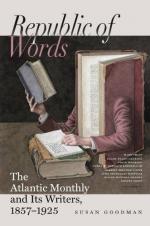“Here lyeth the body of Xph’r Rousbie Esquire, who was taken out of this world by a violent death received on board his Majesty’s ship The Quaker Ketch, Capt. Tho’s. Allen Commander, the last day of October 1684. And also of Mr. John Rousbie, his brother, who departed this naturall life on board the Ship Baltimore, being arrived in Patuxen the first day of February 1685.”
This was a picturesque incident in its scenic character, but a still more engaging one as an occurrence in the path of discovery. Here was most unexpectedly brought to view a new link in the chain of our story. It was a pleasant surprise to have such a fact as this breaking upon us from an ambuscade, to help out a half-formed narrative which I had feared was hopeless of completion. The inscription is a necessary supplement to the marginal notes. As an insulated monument, it is meagre in its detail, and stands in need of explanation. It does not describe Christopher Rousby as the Collector of the Customs; it does not affirm that he was murdered; it makes no allusion to Talbot: but it gives the name of the ship and its commander, along with the date of the death. “The Landholder’s Assistant” supplies all the facts that are wanting in this brief statement. These two memorials help each other and enlarge the common current of testimony, like two confluent streams coming from opposite sources. From the two together we learn, that Colonel Talbot, the Surveyor-General in 1684, killed Mr. Christopher Rousby on board of a ship of war; and we are apprised that Rousby was a gentleman of rank and authority in the Province, holding an important commission from the King. The place at which the tomb is found shows also that he was the owner of a considerable landed estate and a near neighbor of the Lord Proprietary.
The story, however, requires much more circumstance to give it the interest which we hope yet to find in it.
CHAPTER IV.
DRYASDUST.
I have now to change my scene, and to pursue in another quarter more important investigations. I break off with some regret from my visit to St. Mary’s, because it had many attractions of its own, which would form a pleasant theme for description. Some of the results of that visit I embodied, several years ago, in a fiction which I fear the world will hardly credit me in saying has as much history in it as invention. [Footnote: Rob of the Bowl.] But my journey had no further connection with the particular subject before us, after the discovery of the tomb. I therefore take my leave, at this juncture, of good Father Carberry and St. Inigoes, and also of my companion in this adventure,—pausing but a moment to say, that the Superior of St. Inigoes has, some time since, gone to his account, and that I am not willing to part with him in my narrative without a grateful recognition of the esteem I have for his memory, in which I share with all who were acquainted




